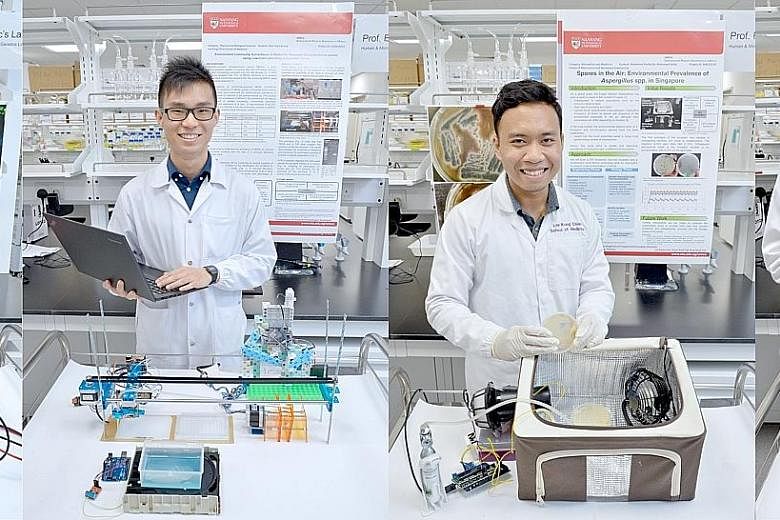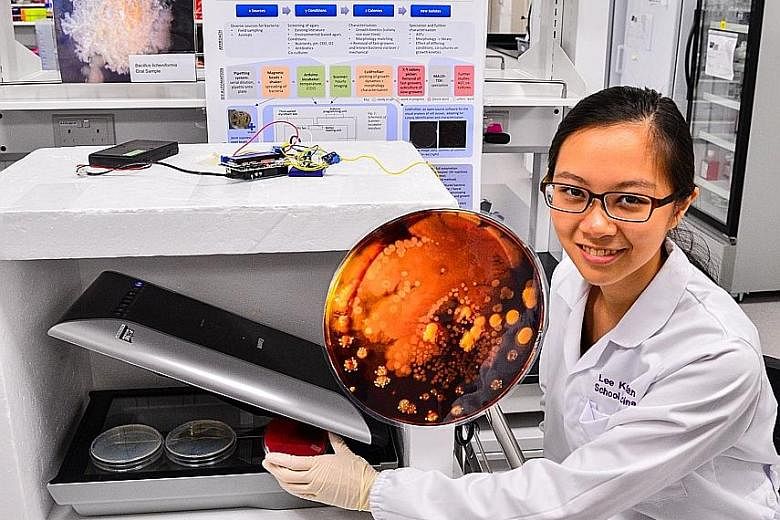Using everyday items like a hairdryer, a mobile phone and even a styrofoam box, students from Nanyang Technological University (NTU) have built laboratory equipment at a fraction of the usual cost.
Not only are the devices cheaper, lighter and more transportable, but they can also test for bacteria, grow fungi and separate mixtures of DNA just like the real thing.
The team of five was led by Associate Professor Eric Yap from NTU's Lee Kong Chian School of Medicine, who was inspired by his own experience helping victims of the 2004 tsunami in Aceh, Indonesia.
He said the lab equipment taken there by the rescue team was too bulky and not suitable for disaster situations, where the environment is chaotic and electricity lacking.
He decided to challenge the students he was supervising under the Undergraduate Research Experience on Campus programme to come up with cheap diagnostic tools.
In the past year, the students have developed various products, tested them in lab and field settings, and written papers on their effectiveness.
Biological sciences student Mohamed Shafiq Mohamed Sahib, 24, built a portable fungal incubator using common items such as a foldable cloth bag, a hairdryer, a filter scavenged from a vacuum cleaner, and small tanks of carbon dioxide meant for use in fish tanks.
His device cost less than $100 to make, whereas a commercial fungi incubator would normally cost $5,000 to buy. Moreover, it can be powered for over a day with just a portable phone charger.
Teammate Wee Soon Keong, 24, also a biological sciences student, modified a robot meant for drawing so it could autonomously perform repetitive functions such as the pipetting of liquids.
Such automated equipment is sold commercially for $100,000. His robot cost just $400.
Next month, these two products will be among those taken to Davao in the Philippines for their first humanitarian trip.
There, they will be used to teach local organic farmers how to develop better methods for finding and growing bacteria that can be used as probiotics to treat soil, compost and animal feed.
The students will also be taking their portable laboratory equipment to public events to educate people about molecular biology.
"Ask anyone what they remember about science classes, and they will probably say growing green beans. We hope we can widen that perspective by letting people try out our equipment," said Mr Wee.



